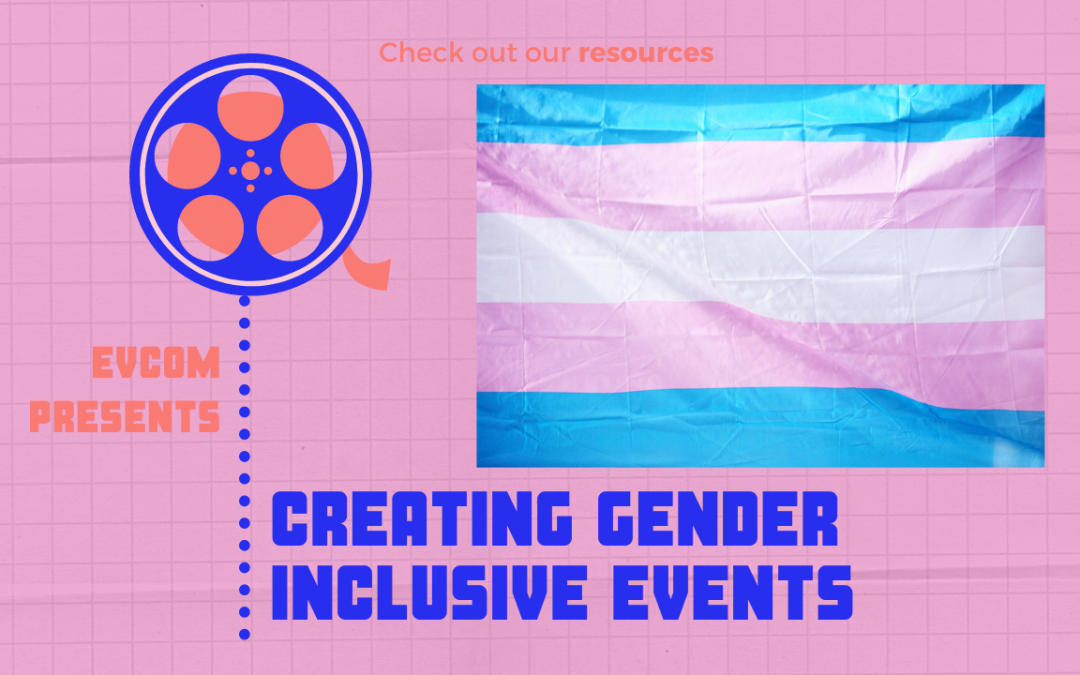This Pride month, we’ve put together a short guide to organising gender-inclusive events, with a focus on inclusivity for trans and non-binary people. This guide is by no means exhaustive but is a starting point of things to consider when organising and delivering your events.
- Where possible, assign a gender neutral bathroom. Consider factoring this into your venue choices, to ensure that people who identify outside the gender binary are able to use the facilities comfortably.
- When signing up for an event, ask people who feel safe to do so to provide their pronouns and then display these on their badges. Be careful not to make this compulsory though. Some trans people aren’t able to use their pronouns safely so it’s important to allow for that. However cis people displaying their pronouns normalises less assumption around pronouns.
- If you ask your attendees to declare their gender in your registration form, ensure that you have multiple options available, not just male and female, or man and woman. There are so many different genders but here are some examples of ones you might want to list: non-binary, gender queer, gender non-conforming, agender, I’d rather not say. Also have a think about whether it’s really necessary to ask for someone’s gender as part of your registration process.
- Similarly, if you ask for people’s title (Mr/ Ms/ Prof etc) during your registration process, make sure there are gender neutral options available. ‘Mx’ is a good example of this. Again, think about why you are asking for someone’s title and if this is necessary.
- Use gender neutral language when addressing a group, or an individual you are meeting for the first time. Think of alternatives to openings like ‘ladies and gentlemen’ eg ‘Welcome everyone’ or ‘Thank you all for being here’. If you are holding an event with multiple speakers and panelists make sure you make them aware of the language you’d like them to use when opening and delivering sessions.
- Also use gender neutral language when addressing an individual you are meeting for the first time, or whose gender you don’t know. Consider introducing yourself using pronouns eg “I’m Amelia, I use she/they pronouns,” to encourage others to do the same. However as discussed above, trans people may not be out in certain spaces or in a safe situation to declare their pronouns. So if someone doesn’t tell you their pronouns, don’t push it as there may be good reason why.
- When taking questions following a talk, keep your language gender neutral language. For example say, “Can I hear from the person in the green shirt?” And only use terms like ‘sir’ or ‘madam’ if you are referring to someone whose pronouns you know.
- If you accidentally misgender someone, don’t panic! It’s okay to make mistakes but try not to make the mistake about you. Apologise, correct yourself and move on. Repeatedly saying how sorry you are and how awful you feel makes the situation about you, instead of the person you have misgendered.
Below we’ve compiled some useful articles which touch on gender inclusivity, pronouns and more. If you have a resource you’d like us to signpost in this list then please email me on amelia.brown@evcom.org.
How to plan a trans-inclusive event (video)
Getting pronoun badges right: Five recommendations for event organizers
Six Pronoun Practices to Build Trans-Affirming Workplaces & Why They Matter
Gender and Pronouns in the Workplace
Creating a Trans-Inclusive Workplace
Article from Stonewall on Gender Neutral Pronouns
Photo by Sharon McCutcheon on Unsplash



